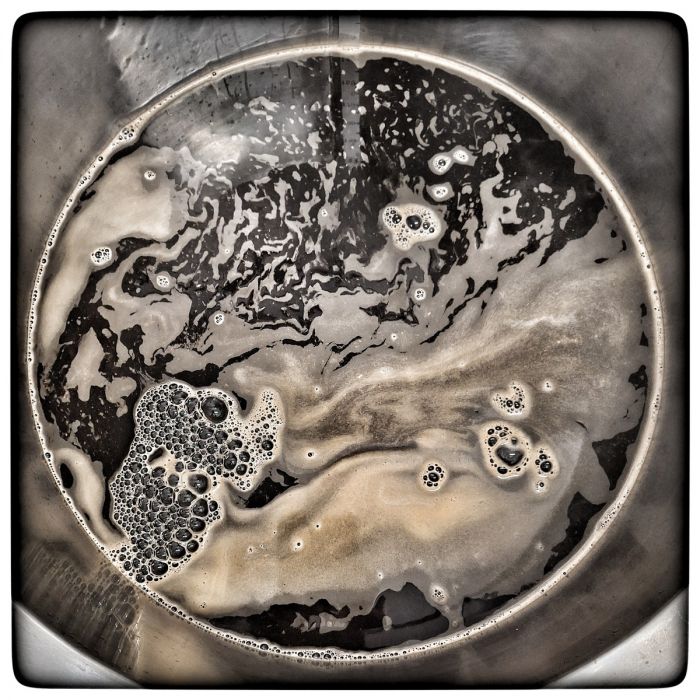
Abt.: Braukessel
Auf jeden Fall ein Porter
Now I have to recapitulate the day a bit. Why in English? 'Cause for me it was one of the 'English only' days. And my brain refuses to switch back in a correct manner.
So what is it about. As some of you may know I started brewing about three years ago. Without any knowledge but a big bucket full of enthusiasm.
I started as a Padawan at the big Jedi Gerald and I learned a lot from him. It was... no, it is a great pleasure to brew with and learn from him.
'Til now I had the great pleasure to brew at two so called nano breweries. No more than about 100 liters per brewing. I did about three beers in a 20 liter vessel at home. That was my experience. Today I entered the next level...
I was allowed to take part in a whole day at the famous Higgins Catacombs. From now on I'm the Padawan of two Jedis. The second one is Bob from Higgins Ale Works. And he gave me a warm welcome:
I said "I'm very happy to be here". He answered "We will see if you are happy in about eight hours as well". In short, yes I was happy eight hours later. And also in short, Bob is a great teacher. Thank you for the day.
...but now it's enough with the belly-rubbing.
I've taken some pictures and I have to describe what can be seen there. Not for you and not for entertainment. Just for me to remember for the next time how that works. 'Cause I'm full of hope there will be a next time... well in time.
Let me start with the end. With the target we want to reach that day. The fermentation tank. On the right you can see my most time workspace. Because brewing is a lot of cleaning and washing up. Especially for a Padawan. But at nine o'clock in the morning the fermentation tank is about ten hours in the future.
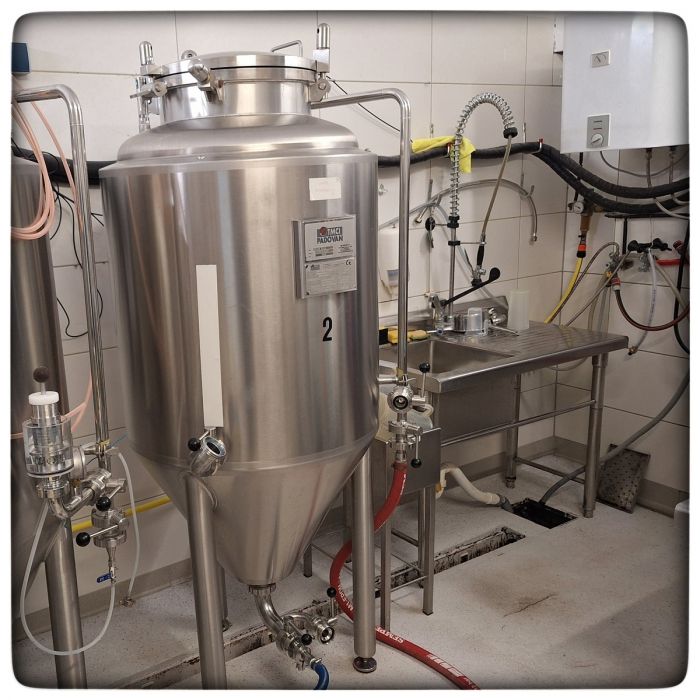
For me the day starts at the mash kettle. Just as I was used to. Heat up the water to the mash temperature. Same as always? No we had two mash kettles. A big one with about 170 liters and a small one with another 70 liters. Gosh. That means a lot of mathematics and physics as well.


You have to calculate how fast the temperature will rise. How much malt for which vessel. How much hops. You have to calculate how many plato you will get in the end when the small vessel shows up with about 14.this° and the big one with 14.that°. You have to care about the pH value. And you have to check that several times.
Some of the values you have to multiply with a magic number to take care of the evaporation. And you need a lot of experience around all of that.
I can still hear the words of an old friend who arrogantly asked why one would need to learn how to brew beer. After all, he could simply follow a ready-made recipe.
Now I would say to him, take the time and join a brewing day with a skilled or experienced brewer and you will get an idea of it. And maybe your arrogance will fade away. But that's not the point for today.
Now I have some pictures of hoses, connectors and switches. And it's very important to connect the right hose to the required connector and in follow up to open and close the right switches at the right time. I'm sure it's something between knowledge, experience and magic to do that in the right manner.
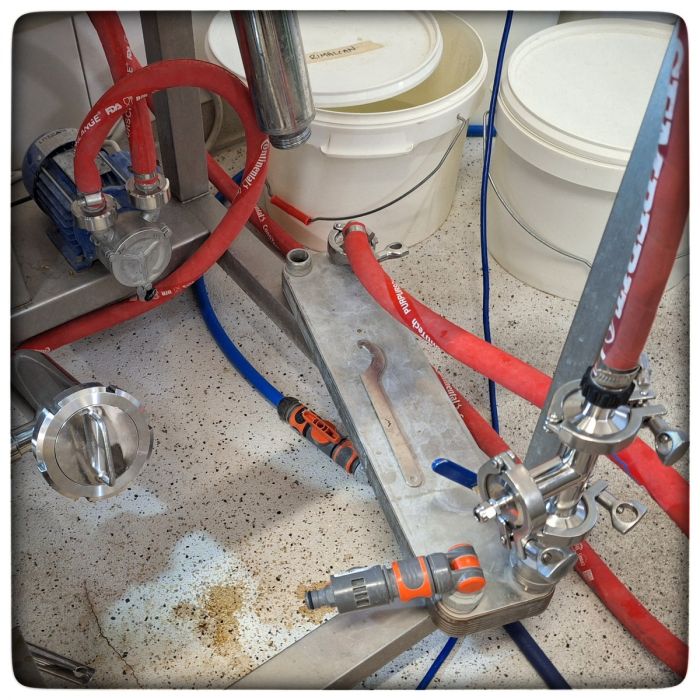
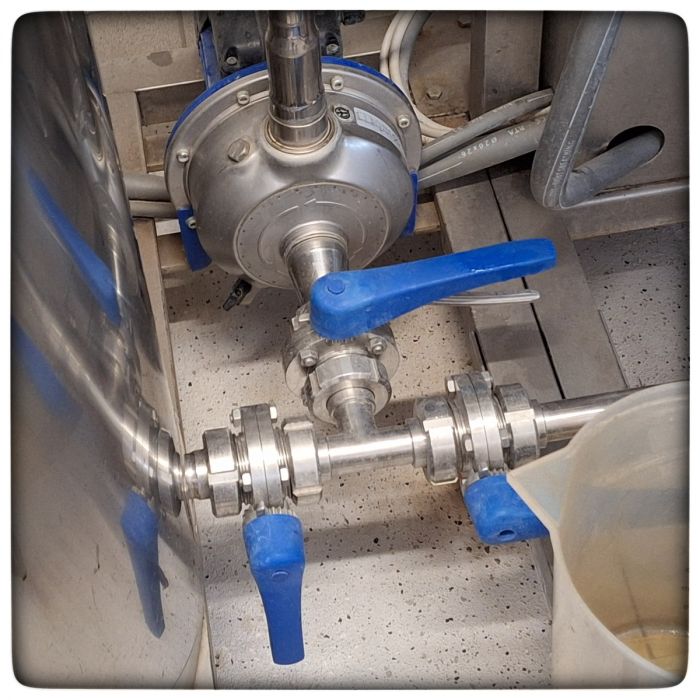
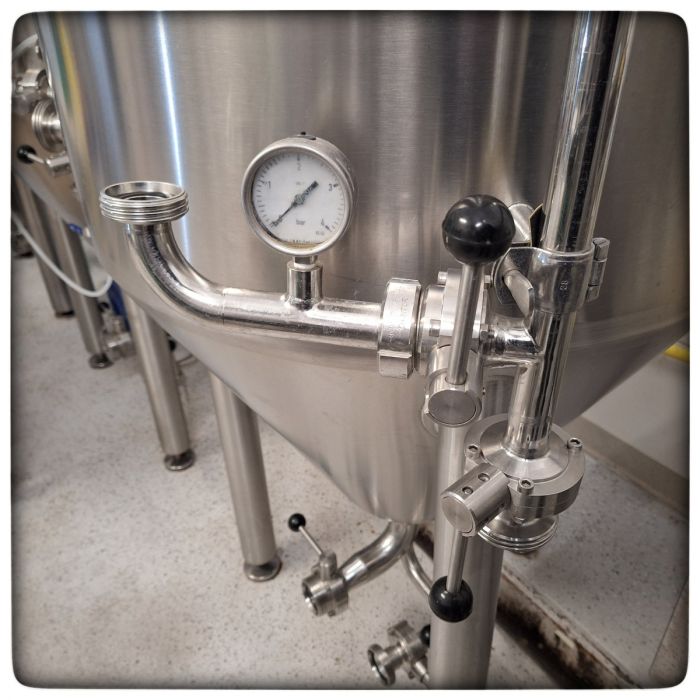
Bob handled that like a born wizard. I really had to pay attention to follow him. And I'm not sure to remember it for the next time. But: hey Bob I will do my very best.
In between I was confronted with some advanced chemistry. So I have to say I was very thankful when I was able to get rid of chemistry at school. Which means I have not the slightest idea what I did. And for what.

Ok, for what, it was to create a London-like water quality. And what I did was measure the amount of calcium sulphate to do so. That's nothing special because I was told to do so.
I've seen the probably best jod test ever.
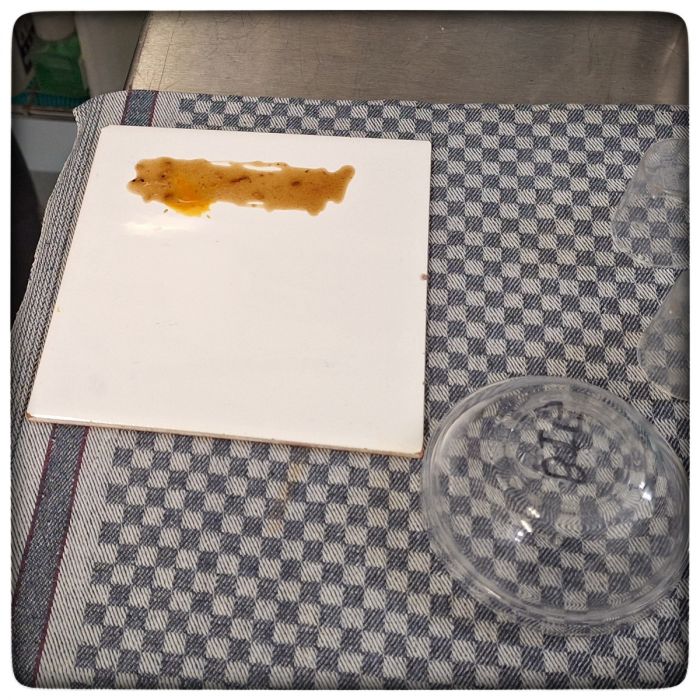
Some years ago at another brewery we decided not to use a heat exchanger. Not because it does not work - it did work very well - because we had no idea to clean it properly. So we were permanently in fear of an infection. On the other hand a cooling spiral worked a lot faster. But it might be we tried it just with a child's tool.
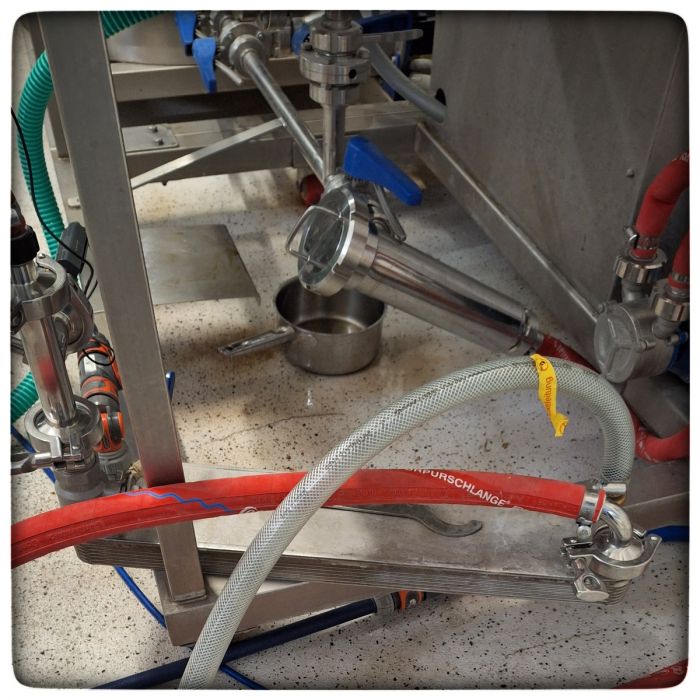
This one worked very well and very fast. And I'm pretty sure if there will be a potential risk for an infection, Bob would ban it from the brewery at once.
It's a great moment to add the yeast. That means everything worked well and we did a great job.
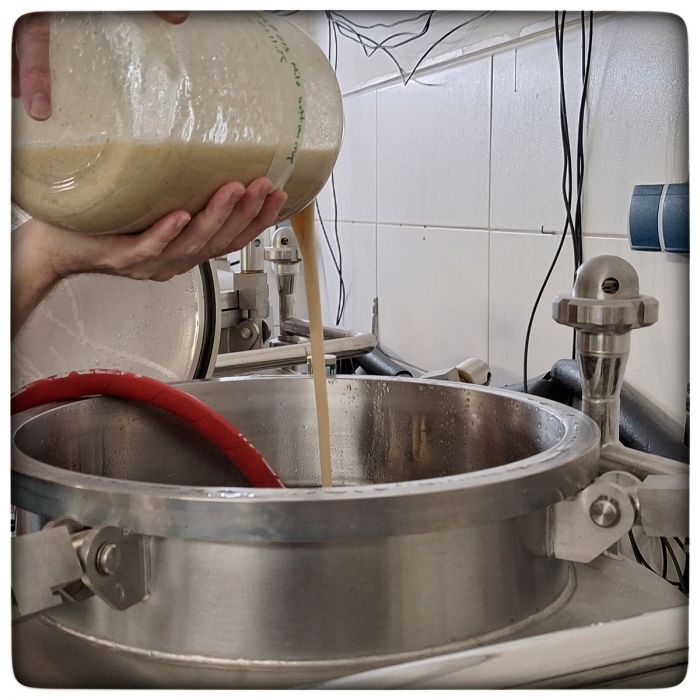
...and of course the last chapter of a brewing day starts: clean up everything. And you slowly realise that you are already about eleven hours on your feet. And you are very happy to realise the end of the brewing day was just a few minutes away. And then:
FEIERABENDBIER ... juhu.